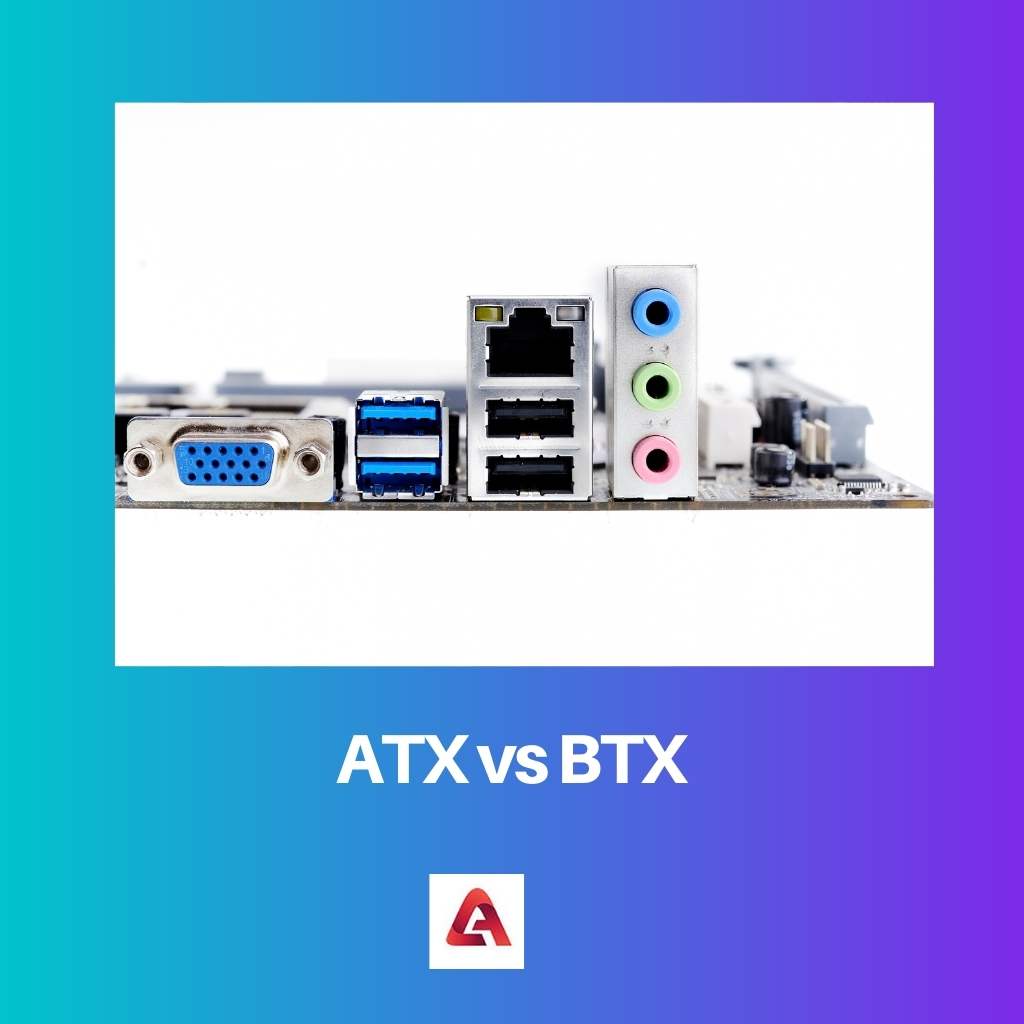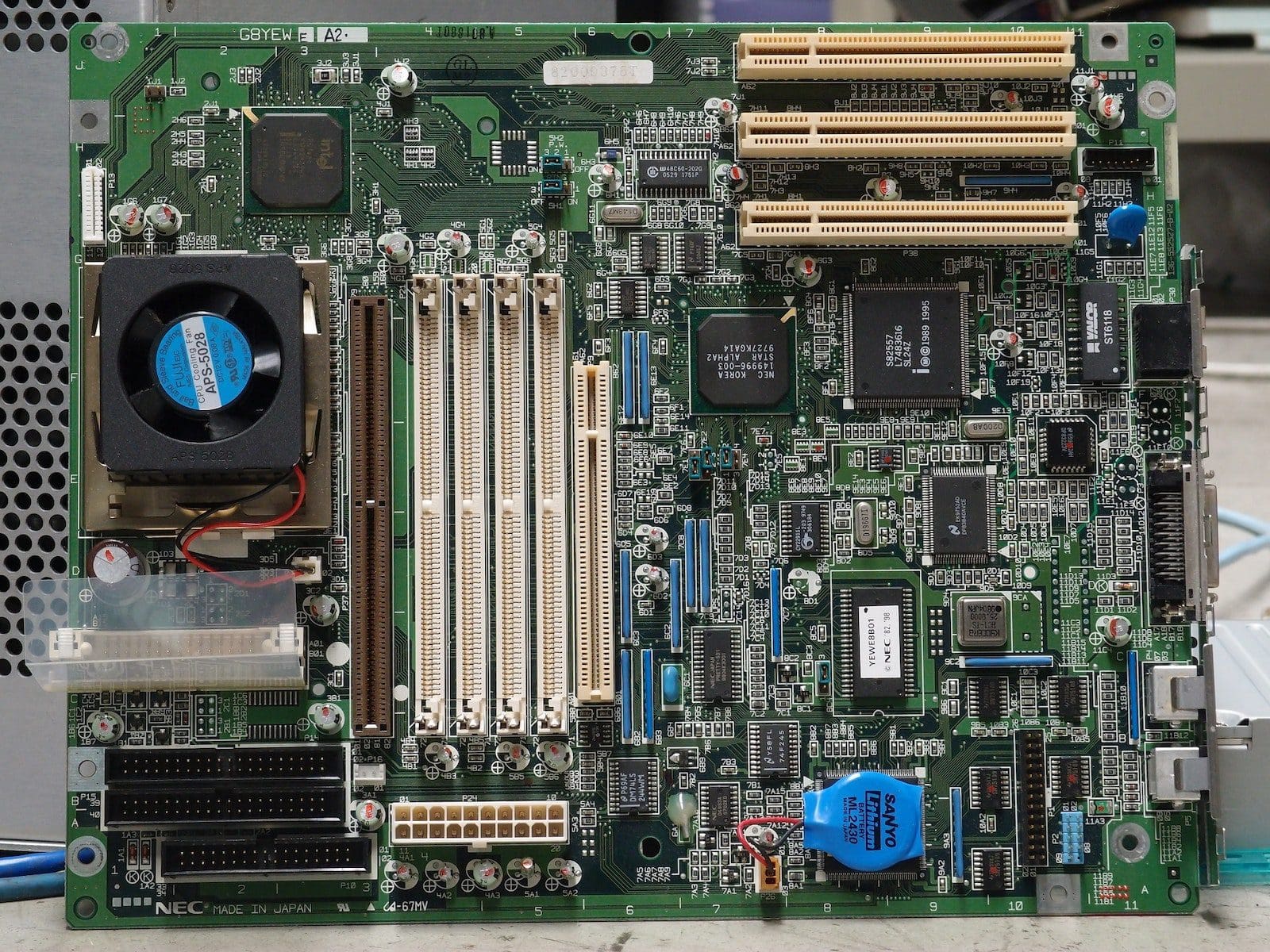ATX (Advanced Technology Extended) and BTX (Balanced Technology Extended) are motherboard form factors. ATX follows a traditional layout with expansion slots aligned parallel to the board’s longer edge, while BTX positions components for improved airflow and cooling efficiency.
Key Takeaways
- ATX is a motherboard form factor introduced in 1995 and is still used today.
- BTX is a newer motherboard form factor introduced in 2004 but has been largely replaced by other standards.
- ATX motherboards are larger and have more expansion slots, while BTX motherboards are designed for better cooling and quieter operation.
ATX vs BTX
ATX is a motherboard form factor developed by Intel in 1995 and is commonly used in PC builds. It has specific measurements and features, including a 24-pin power connector, PCI and PCI Express slots, and support for multiple storage devices. BTX (Balanced Technology eXtended) is a motherboard form factor that is designed to improve thermal management and system cooling. It was developed by Intel.

The introduction of BTX was an advancement in the technology used in the ATX and overcame the heating issue of the ATX board by maximizing the cooling process of the processors used in the computer.
Comparison Table
| Feature | ATX | BTX |
|---|---|---|
| Release Date | 1995 (Intel) | 2003 (AMD) (Discontinued) |
| Market Share | Dominant standard | Niche product, very rare |
| Component Layout | Traditional layout: CPU in center, RAM slots on right, expansion slots on right | Re-arranged layout: CPU at front, RAM on left, expansion slots on right |
| Airflow | Standard airflow: warm air rises from components | Improved airflow: dedicated channel for cooler air to reach CPU first |
| Compatibility | Wide range of cases, power supplies, coolers | Limited compatibility due to discontinued format |
| Upgradability | More options for future upgrades | Limited upgrade options due to lack of support |
| Advantages | Widely available, easy to find compatible parts | Potentially better cooling performance |
| Disadvantages | Standard airflow can be less efficient | Discontinued format, limited compatibility |
What is ATX?
ATX, short for Advanced Technology Extended, is a motherboard form factor standard developed by Intel in 1995 to replace the previous AT (Advanced Technology) form factor. It has since become the predominant form factor for desktop computer motherboards due to its flexibility, expandability, and compatibility with a wide range of components.
Key Features and Specifications
- Physical Dimensions: ATX motherboards measure 12 x 9.6 inches (305 x 244 mm). This standardized size allows for compatibility with a wide range of computer cases.
- Layout and Expansion Slots: ATX motherboards feature a standardized layout with expansion slots aligned parallel to the board’s longer edge. These expansion slots commonly include PCI, PCIe, and RAM slots, providing ample room for expansion cards such as graphics cards, sound cards, and networking cards.
- Power Connectors: ATX motherboards feature a 24-pin power connector, providing power to the motherboard, as well as additional connectors for supplying power to the CPU, peripherals, and other components. This standardized power delivery system ensures compatibility with various power supplies.
- Back Panel Connectors: ATX motherboards include a variety of connectors on the rear I/O panel, such as USB ports, audio jacks, Ethernet ports, and video outputs (if integrated graphics are present). These connectors enable easy connectivity with external devices and peripherals.
Advantages and Popularity
- Versatility: ATX motherboards offer a balance between size and expansion capabilities, making them suitable for a wide range of computer builds, from budget-friendly systems to high-performance gaming rigs and workstations.
- Compatibility: The standardized ATX form factor ensures compatibility with a vast array of computer cases, power supplies, expansion cards, and other components, simplifying the building and upgrading process for users.
- Widespread Adoption: Due to its versatility, compatibility, and widespread industry support, ATX has become the de facto standard for desktop computer motherboards, making it readily available and accessible to consumers and system builders alike.

What is BTX?
BTX, which stands for Balanced Technology Extended, is a motherboard form factor standard introduced by Intel in 2004 as a successor to the ATX standard. It was designed to address issues such as heat dissipation and system cooling by reconfiguring the layout of components on the motherboard to improve airflow and thermal management.
Key Features and Specifications
- Physical Dimensions: BTX motherboards have dimensions similar to ATX motherboards, with slight variations in size depending on the specific BTX variant. However, the layout and orientation of components differ significantly from ATX.
- Component Placement: In BTX motherboards, components such as the CPU, memory slots, and expansion slots are arranged in a way that optimizes airflow and cooling. The CPU socket is positioned closer to the front of the case, while expansion slots are aligned perpendicular to the motherboard’s plane, allowing for more efficient cooling of components.
- Airflow Design: BTX motherboards feature a standardized airflow design that directs cool air from the front of the case over the CPU and other heat-generating components before exhausting it through the rear of the case. This design helps maintain lower operating temperatures and improves system stability and longevity.
- Back Panel Connectors: Similar to ATX, BTX motherboards include a variety of connectors on the rear I/O panel for connecting external devices and peripherals. These connectors may vary depending on the specific motherboard model but include USB ports, audio jacks, Ethernet ports, and video outputs.
Advantages and Disadvantages
- Improved Cooling: BTX’s optimized airflow design results in better cooling performance compared to traditional ATX layouts, leading to lower operating temperatures and potentially longer component lifespan.
- Enhanced Stability: By reducing heat buildup and improving thermal management, BTX systems may exhibit increased stability and reliability, particularly under heavy workloads or in overclocked configurations.
- Limited Adoption: Despite its potential advantages, BTX failed to gain widespread adoption in the consumer market. This was primarily due to compatibility issues with existing ATX components, lack of industry support, and the emergence of alternative cooling solutions such as liquid cooling.
- Compatibility Challenges: The unique layout and component orientation of BTX motherboards made them incompatible with many existing ATX computer cases, power supplies, and expansion cards. This limited users’ ability to upgrade or build new systems using BTX components, ultimately hindering its adoption and relegating it to niche applications.

Main Differences Between ATX and BTX
- Layout Orientation:
- ATX: Expansion slots are aligned parallel to the motherboard’s longer edge.
- BTX: Components, including CPU socket and expansion slots, are positioned perpendicular to the motherboard’s plane, optimizing airflow.
- Cooling Design:
- ATX: Traditional cooling setup with varying airflow patterns depending on case design.
- BTX: Standardized airflow design directs cool air from the front of the case over heat-generating components before exhausting it through the rear, improving thermal management.
- Adoption and Compatibility:
- ATX: Widely adopted and compatible with a vast array of cases, power supplies, and expansion cards.
- BTX: Limited adoption due to compatibility issues with existing ATX components and lack of industry support, relegating it to niche applications.
- https://asmedigitalcollection.asme.org/InterPACK/proceedings-abstract/InterPACK2005/42002/287/306007
- https://eric.ed.gov/?id=EJ728913

The BTX’s emphasis on airflow and cooling is certainly impressive, but it’s surprising that it hasn’t gained widespread adoption in desktop systems.
Agreed. Perhaps the costs associated with BTX and the existing user base of ATX systems are limiting its adoption.
It’s ironic that advanced cooling solutions don’t always lead to immediate market success.
Both ATX and BTX have their pros and cons, but it’s interesting to see how they cater to different needs in the computer hardware market.
Despite the advantages of BTX, many people are still sticking to ATX due to the high cost and compatibility issues with BTX. This shows that practicality outweighs technological advancements.
Absolutely, economics and compatibility play a significant role in the adoption of new technologies.
The introduction of BTX certainly addressed the heating issues that were present in ATX. It’s important to see how technology evolves to solve problems.
Absolutely, the need for efficient cooling in computer systems has driven these advancements in motherboard design.
The technical specifications of these two motherboards are very interesting. It’s amazing to see how much advancement has been made in terms of heat management and airflow.
Indeed, I’m impressed by the improvements in both ATX and BTX. It’s crucial for high-performing computers to have good heat management.
I think it’s clear that the BTX has significant advantages over ATX in terms of thermal management.
The comparison between ATX and BTX highlights the challenges of technological adoption and the complexities of market dynamics.
Indeed, the interplay between technological innovation and market acceptance is a fascinating subject.
The cost and power efficiency factors associated with ATX and BTX are important considerations that drive decision-making in hardware purchases.
Absolutely, consumers weigh these factors extensively when investing in computer components.
This detailed comparison provides a deep understanding of the differences between ATX and BTX. It’s fascinating to see the evolution of these technologies.
Agreed. The evolution of these motherboard technologies reflects the ever-changing landscape of the computing industry.
The shift from ATX to BTX represents a significant advancement in thermal management for motherboards, but the adoption rate is slower than expected.
True. It’s a testament to the influence of user habits and existing technologies on the pace of innovation.
It’s comical how even advanced designs like BTX face resistance from traditional user preferences.
The history and design features of ATX and BTX show the intricate balance between performance, cost, and user preferences in the tech industry.